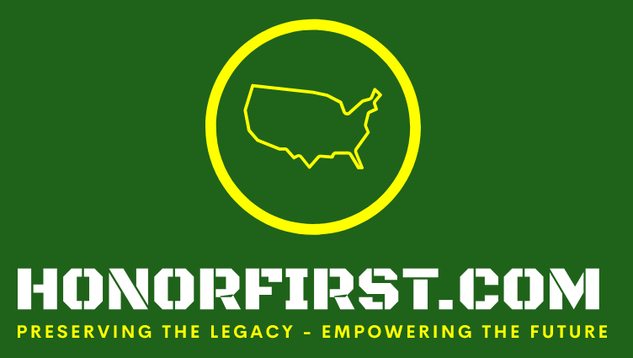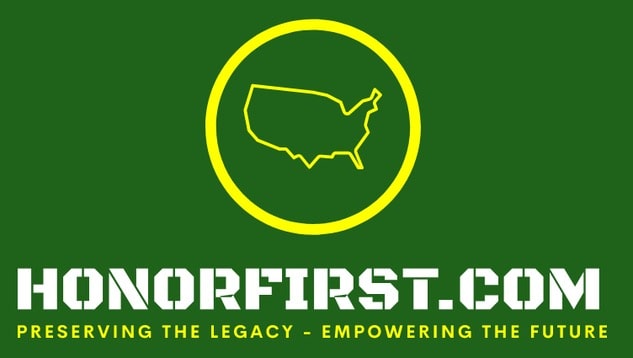June 5 - June 11Good morning! Welcome to another This Week in USBP History! It's a huge week with tons of documents! Standing out to me is a copy of the first detailed proposal to create a Border Patrol from 1918! How cool is that! There's also a 1922 document (the earliest of which I am aware) about an immigration checkpoint in Oceanside, California. That's right, checkpoints for immigration purposes predate the USBP. And we remember actions the led to two Border Patrol Agent being recognized with Newton-Azrak Awards. Plus much more! Also, among the anniversaries of the fallen are Douglas C. Shute and James M. Carter who fell due to the same incident in 1956. A sad fact is that the USBP has lost two Agents/Inspectors due to the same event nine times (18 fallen). Their names are listed below:
Have a great week! Cliff PS -
House Keeping This is the section where I correct the mistakes from my last email. I will also use this section to provide other perspectives of USBP history. I didn't find any errors of significance from last week. Esprit de Corps The workplace climate resulting from a combination of organizational pride and employee morale.
Esprit de corps is reinforced through the shared goals, mission and values of the organization and its employees. The definition turns Esprit de Corps into a simple formula and defines parts that comprise organizational pride and employee morale. Esprit de Corps = Organizational Pride + Employee Morale Esprit de Corps is the key to a healthy organization and engaged employees. Honor First is foundational to the Border Patrol's organizational pride and integral to its Esprit de Corps. Documents/Events 1918
Newton-Azrak Award Action Anniversaries Follow this link to see examples of USBP employees Upholding Honor First.
1975 James P. Moody Patrol Agent McAllen Sector Patrol Agent James P. Moody was recognized for his courage while under gunfire in placing a gravely wounded fellow officer in a car and driving through that same fire to get to the hospital. On June 9, 1975 at approximately 0030 hours, Senior Patrol Agent Allen H. Fry and Patrol Agent James P. Moody were performing assigned line-watch duties east of Brownsville, Texas. Observing a suspicious car in a known smuggling area with several people visible in the car, they attempted to stop the vehicle, which immediately took evasive action. The vehicle was pursued about two miles and SPA Fry driving the government unit was able to force it to stop. Several people immediately attempted to flee and were pursued by PA Moody. At that time, PA Moody heard a shot and a cry from Fry that he had been hit. Moody immediately returned to the vehicle. Moody observed that Fry had managed to get to the driver's seat and was attempting to radio for assistance. Moody observing that Fry was gravely injured and bleeding profusely, started around the car to assist Fry when he came under fire from a concealed position to his right. Eight to ten shots were fired at Moody as he moved around the car, and he returned fire with three rounds from his service revolver. Ignoring his personal safety, he ran under fire to the left side of the Service vehicle and seeing that Fry was in grave danger of bleeding to death, placed him on the rear seat to transport him to the hospital. Moody, knowing that the shortest route to the hospital was back through the area under fire, drive the car forward about 100 yards, turned around and passed back through the area of the assault, again exposing himself to extreme danger from the assailant and proceeded at a high rate of speed for the hospital. Moody alerted nearby units of the assault and the grave injury, had the hospital alerted of the emergency, which resulted in a doctor and staff being on stand-by awaiting his arrival. There is little doubt that this immediate action saved SPA Fry's life. 1992 Michael W. Snyder Border Patrol Pilot Del Rio Sector On June 9, 1992, Border Patrol Pilot Michael W. Snyder assisted the Uvalde County Sheriff’s Department in saving the life of one swimmer and obtaining much needed medical attention for several others. The Frio River was at flood stage due to recent heavy rains and swimmers were reported stranded. Pilot Snyder flew the Service helicopter directly over the stranded couple and Captain Watkins dropped a rope to the man, who was near exhaustion yet trying to keep his female companion above water and hold on to an inner-tube. After several attempts to get the rope to the man, it became apparent it was not going to work. Pilot Snyder maneuvered the helicopter among tall cypress tress and power lines to obtain visual contact with the peopled in the water, dipped the skid under the man, and nudged the couple towards the banks to several other swimmers who jumped in and pulled them out of the water. Unfortunately, the female did not make it; however, the man was saved and several others were taken by Pilot Snyder to an ambulance to receive medical attention. USBP Fallen
As of May 16, 2022, the U.S. Border Patrol has suffered 152* fallen. Titles:
The facts regarding each officer are presented without major editing of the "language of the day" found in the reports detailing the circumstances of each event. This is done to provide the reader an association with historical timeframes. Employees who died in the line of duty due to being exposed to deadly illnesses will not have the cause of death listed. *With the exception of two of the fallen immediately below, all names are listed (or in the process of being included) on the official Honor Roll of U.S. Border Patrol Fallen and inscribed on the National Law Enforcement Officers Memorial. The U.S. Border Patrol should fix these discrepancies. HonorFirst.com honors both of the fallen.
1956 Douglas C. Shute Date of Birth: December 31, 1918 Entered on Duty: September 5, 1950 Title: Airplane Pilot End of Watch: June 6, 1956 Details: During the morning hours of June 6, 1956, Airplane Pilot Douglas C. Shute was patrolling in a Piper Supercub. He was working with a ground unit engaged in “sign-cutting,” a term applied to locating and following footprints or other physical evidence left by a person in traversing an area. Pilot Shute landed the plane on a roadway and conferred with Patrol Inspectors James M. Carter, Emmit R. Brotherton, and Carter M. Newsome. The ground crew had located the tracks of two persons, which could more readily be checked out by officers in the aircraft. Patrol Inspector James M. Carter decided to serve as observer in the aircraft while the other officers continued to follow the tracks on the ground. Pilot Shute informed the officers by radio that the walkers had been located and instructed to come out of the brush to be picked up by the ground crew. Shortly thereafter, the plane went into a steep climb and stalled. It began a left spin from which there was no recovery. It struck the ground in vertical descent. The engine was driven back into the cockpit, the force of the impact telescoping the cabin, imprisoning the pilot and observer. Both were killed on impact. James M. Carter Date of Birth: February 26, 1921 Entered on Duty: April 25, 1955 Title: Patrol Inspector End of Watch: June 6, 1956 Details: Patrol Inspectors James M. Carter and Carter M. Newsome were temporarily detailed from Marfa, Texas, to Comstock, Texas, on June 4, 1956, for a two-week horse patrol operation to work in the vicinity of Comstock. On June 6th these officers, accompanied by Patrol Inspector Emmit R. Brotherton, were about 35 miles north northwest of Comstock engaged in “sign-cutting,” a term applied to locating and following footprints or other physical evidence left by a person traversing an area. The officers had located two sets of footprints and were tracking them when Service aircraft N4375A, piloted by Airplane Pilot Douglas G. Shute, arrived. Thereafter, the aircraft was used in the search operation with Patrol Inspector Carter serving as observer in the plane. At about 10:00 a.m., the pilot reported by radio that the walkers had been located and directed the ground crew on a course to intercept them. The plane was then seen making a banking turn to the left and resuming level flight at 100 feet altitude. Shortly thereafter, the plane went into a steep climb and at 450 feet, it stalled, falling into a left spin from which there was no recovery. There had been no change in engine power during the maneuver, in the spin, or at impact. The plane struck the ground in vertical descent, the engine being driven back into the cockpit. The force of the impact telescoped the cabin, imprisoning the pilot and observer.
Comments
|
Clifford GillBlog author, retired U.S. Border Patrol Assistant Chief and, current U.S. Border Patrol employee advocate. Ray HarrisSite founder and owner, former Supervisory Border Patrol Agent and retired Immigration Special Agent. Joseph BancoU.S. Border Patrol historian and retired Deputy Chief Patrol Agent. Archives
July 2024
I prefer that you leave comments. However, if you wish to contact me, please do so by emailing [email protected].
|
- Home
-
For USBP Applicants
-
USBP Pages and Links
- Firearms Qualification Course
- Military Time Buy Back
- Station MWRs
- Transitioning Out of the USBP
- Fast & Furious
- U.S. Border Patrol Fallen >
- Honor First and Esprit de Corps
- USBP Photo Galleries
- U.S. Border Patrol History >
- U.S. Border Patrol Honorary Awards
- Upholding Honor First >
- U.S. Border Patrol Authorized Devices
- Border Patrol Stories
- What's Important Now - Academy Podcast
- Badges
- Veterans
- Tips for the Media
- Links
- Acronyms
- Border Patrol Locations
- Sector/Station FaceBook Pages
- Ten Codes
- Online Forums
- Search
- Home
-
For USBP Applicants
-
USBP Pages and Links
- Firearms Qualification Course
- Military Time Buy Back
- Station MWRs
- Transitioning Out of the USBP
- Fast & Furious
- U.S. Border Patrol Fallen >
- Honor First and Esprit de Corps
- USBP Photo Galleries
- U.S. Border Patrol History >
- U.S. Border Patrol Honorary Awards
- Upholding Honor First >
- U.S. Border Patrol Authorized Devices
- Border Patrol Stories
- What's Important Now - Academy Podcast
- Badges
- Veterans
- Tips for the Media
- Links
- Acronyms
- Border Patrol Locations
- Sector/Station FaceBook Pages
- Ten Codes
- Online Forums
- Search


 RSS Feed
RSS Feed
